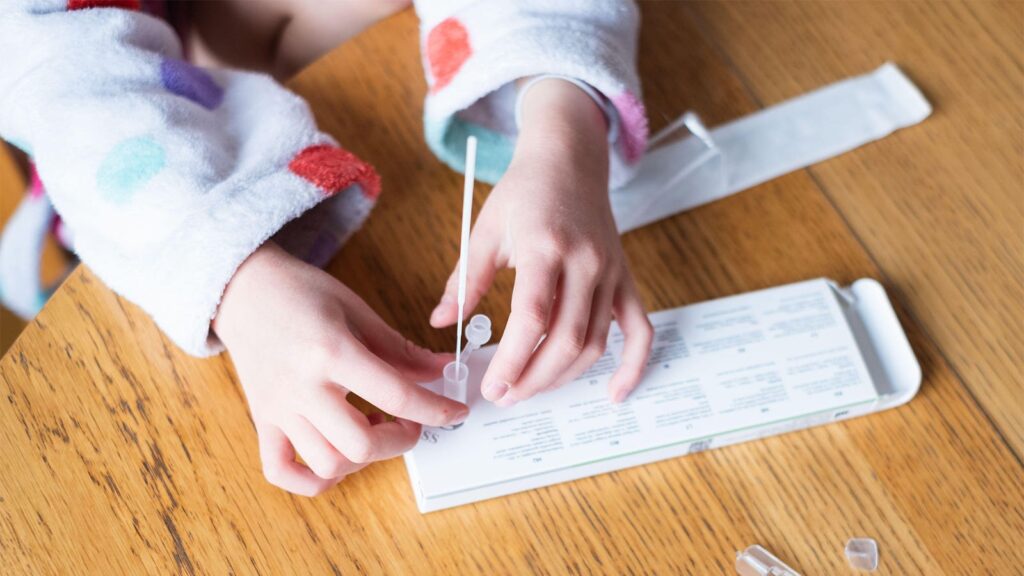Six to 12 months after COVID-19 infection, very few children developed post-COVID-19 conditions (PCCs) as defined by the World Health Organization (WHO), a prospective Canadian study found.
At 6 months after being tested for SARS-CoV-2 in pediatric emergency departments (EDs), just 0.52% of children who tested positive had symptoms and changes in quality of life consistent with PCCs, as compared with 0.10% of those testing negative (P=0.02). At 12 months, these rates rose to 0.67% and 0.16%, respectively (P=0.02).
Overall, quality of life did not differ between the two groups, Stephen Freedman, MDCM, MSc, from Alberta Children’s Hospital Research Institute in Calgary, and colleagues reported in JAMA Network Open.
“Our team was surprised by the near identical findings regarding the frequency of the PCCs between study groups,” Freedman told MedPage Today. “Although [PCCs] were slightly more common among children who were infected by SARS-CoV-2, the fact that quality of life did not differ speaks to the overall minimal impact that SARS-CoV-2 infection plays in leading to chronic symptoms in children.”
“There’s been a lot of speculation on how many kids have symptoms after COVID,” Elizabeth Schlaudecker, MD, MPH, medical director of the division of infectious diseases at Cincinnati Children’s Hospital, told MedPage Today. “I have to say that this [study] goes along with my clinical experience. In general, we do see a lot of kids who have symptoms after any virus, for example, influenza or the Epstein-Barr virus.” She cautioned that clinicians shouldn’t automatically think that chronic conditions arising after SARS-CoV-2 infection are long COVID.
The most commonly reported symptom at 12 months in children who had tested positive for SARS-CoV-2 were recurrent respiratory infections and congestion (88%). Systemic (38%) and neurologic (13%) symptoms were also observed.
Previous studies of PCCs in children have produced inconsistent results, the authors pointed out. For example, one study found an absolute increased risk of 1.6% for PCC at 90 days for children with SARS-CoV-2 seeking ED care when compared with matched SARS-CoV-2-negative controls, but a systematic review concluded that the risk for pediatric PCC could be as high as 25%.
One of the reasons could be that many studies have used broad, nonspecific definitions for PCC, the authors conjectured. In the current study, researchers used a strict definition of PCCs based on WHO criteria that included all of the following:
- Positive polymerase chain reaction (PCR) test for SARS-CoV-2 collected at or within 14 days after an ED visit
- Signs, symptoms, or diagnosis of a condition reported 30 to 90 days after a positive PCR test, lasting 9 to 13 months after COVID-19 illness
- Lower overall health status, rated on a 0- to 100-point scale, than before infection with SARS-CoV-2, plus a suboptimal Pediatric Quality of Life score across psychosocial and physical functioning domains
“In this particular article … they’re using this new World Health Organization definition, that is defining a pretty severe detriment and function, so I am not surprised that they found a low number in both groups of children,” Schlaudecker commented.
Freedman said that “at a population level, we probably do not need to worry about chronic symptoms associated with SARS-CoV-2 infection in children.”
“Our study highlights the need to focus more on strategies to prevent infection due to the acute impacts that infection can have on children and at-risk individuals that they come in contact with, such as the elderly or immunocompromised,” he added.
The study included 1,152 children with SARS-CoV-2 positive tests and 3,995 with negative tests and 6-month follow-up data, and 1,192 with positive tests and 4,371 with negative tests and 12-month follow-up data.
Median age of children in the study was 2 years, and 53% were male. Approximately 6% had received at least one COVID-19 vaccine dose. Among those testing positive, Omicron infections were most common (35%) during the study period (August 2020 to February 2022), followed by the wild-type strain (27%), Delta (22%), Alpha (16%), and a few cases of the Gamma variant.
Researchers pointed out study limitations, including that 30% of eligible study participants were lost to follow-up and that those who completed the study were more likely to be infected with the Omicron variant, which is less likely to be associated with PCCs. The study also relied on caregiver reporting of PCC symptomatology, which may not always be reliable.
-
Katherine Kahn is a staff writer at MedPage Today, covering the infectious diseases beat. She has been a medical writer for over 15 years.
Disclosures
The study was funded by the Canadian Institutes of Health Research and the Public Health Agency of Canada’s Immunization Partnership Fund and their Emerging Issues Fund.
Freedman reported no ties to industry. A co-author disclosed support from Meridian Bioscience.
Schlaudecker reports no financial relationships relevant to the study.
Primary Source
JAMA Network Open
Source Reference: Dun-Dery F, et al “Post-COVID-19 condition in children 6 and 12 months after infection” JAMA Netw Open 2023; DOI: 10.1001/jamanetworkopen.2023.49613.
Please enable JavaScript to view the

